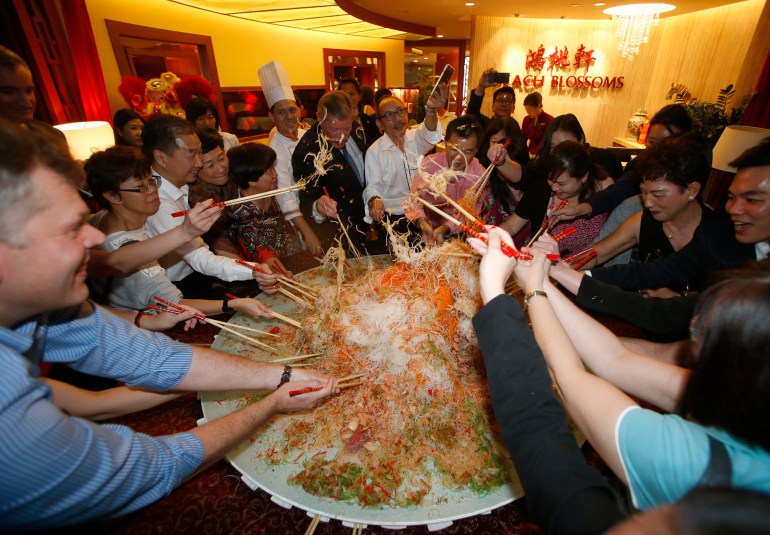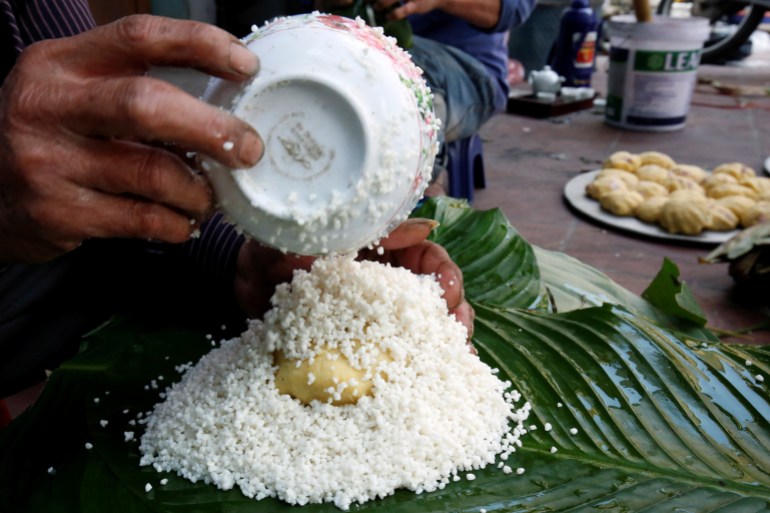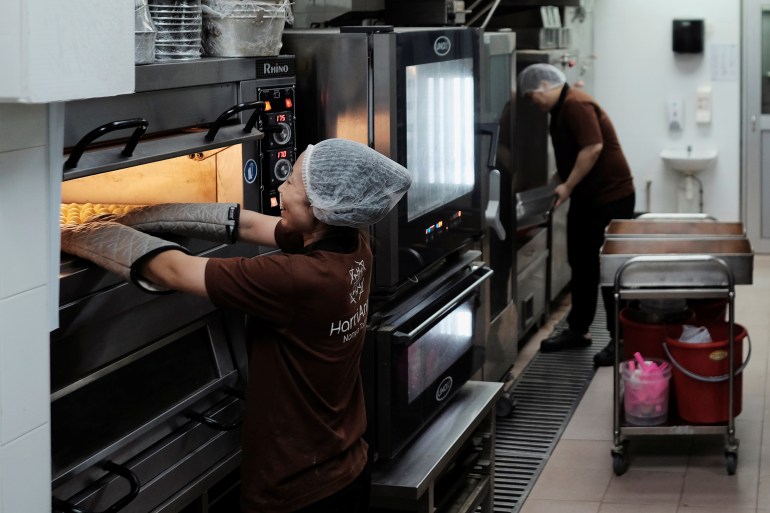It’s the year of the dragon, and celebrations are about to begin.
Starting on Saturday, hundreds of millions of people around the globe will mark the Lunar New Year. Families will come together for celebrations that will extend over several days in multiple countries, including China, North and South Korea, Malaysia, the Philippines, Indonesia, Singapore, Brunei and Vietnam as well as among diaspora communities in other nations.
Food is a central part of the Lunar New Year experience with signature dishes prepared specifically for the occasion.
Here is a look at some Lunar New Year dishes and what they symbolise:

Yusheng
This colourful raw fish salad with fresh vegetables is popular in Malaysia and Singapore. It is believed to have been introduced by Cantonese and Teochew immigrants. In Cantonese, the word for fish sounds like the word for abundance.
Sliced raw fish is central to the dish, and bright salmon has long been the go-to option.
Meghan Poh, a Singapore-based designer and illustrator, told Al Jazeera that assembling yusheng can be an exciting communal ritual for families.
According to the 24-year-old, auspicious phrases are often chanted with the addition of every ingredient as yusheng is assembled. Most chants are wordplays on the ingredient names.
Shredded carrots and lime add a zesty earthiness while crushed golden crackers and peanuts add a nutty crunch. Spices are sprinkled, oil is drizzled and then comes the most exciting part: Family members and friends gather around the dish with large chopsticks to toss together the elements in a ritual that is also called the prosperity toss.
In fact, yusheng is also called lo hei, which is Cantonese for “tossing up”. “Apparently, the higher you toss, the wealthier or luckier you are in the New Year,” Poh said.

Banh chung
For the Lunar New Year, houses in Vietnam are decorated in red and yellow – “the colours of wealth and wellbeing in our culture”, Vietnamese student Thuc Ngo said.
Workplaces and schools take an eight- to 10-day break, also known as the Tet holiday in Vietnam. “We have big platters with different kinds of food,” she said, explaining that the items are also presented on the ancestral altar.
Banh chung is a signature Lunar New Year dish in Vietnam. It consists of square layers of aromatic glutinous rice, tender beans and pork.

Thuc, who is studying business in Qatar, said the layering of the assorted elements in banh chung symbolises natural elements such as animals and plants living in harmony with humans.
“You use the banana leaf to wrap them together with the string,” Thuc said. The banh chung are then placed in a large pot and steamed for up to 10 hours until they are cooked into glossy, green squares with a delicate flavour. The stickiness of the rice is a signature property of the rice cakes. They are also said to be symbolic of the earth or the land of Vietnam.
“It is a big tradition to gather around the big pot of banh chung on New Year’s Eve to watch it cook overnight, so that your whole family has banh chung to eat throughout the Tet holiday,” she said.

Tteokguk
This savoury rice cake and meat stock soup is a staple of Korean cuisine and a signature dish during the Lunar New Year. The broth is most commonly beef-based. Seaweed and green onion can be added to the dish.
Traditionally, rice cakes were not consumed every day because rice was a scarce, expensive commodity and was reserved for special occasions, such as the Lunar New Year, called Seollal in Korea.
Tteokguk is one of the foods presented to ancestors during a traditional ritual called charye.
The chewy rice cakes are small and circular. They are believed to resemble coins and symbolise wealth and prosperity. They are also white, symbolic for purity and cleanliness as Koreans mark the start of a New Year.

Pineapple tarts
Particularly popular as a Lunar New Year sweet in Taiwan, pineapple tarts are now common in other parts of Asia – particularly Malaysia and Singapore – as well as other parts of the world.
Once again, the significance of the dish lies in words and sounds. The Chinese word for pineapple, “ong lai”, sounds similar to “incoming luck” in the Hokkein dialect. That’s what makes the buttery cookies a must–have for the celebrations, with families stocking up on supplies for festive visitors or to give as gifts to friends and business associates.
Pineapples have also become a political symbol of Taiwanese identity during the self-governing territory’s mounting tensions with China. In 2021, Beijing banned the import of the fruit from Taiwan.

Zhai choy
Poh, the designer in Singapore, prepares meals with her immediate family and uncle for a large family gathering every Lunar New Year. Her family sits around the house wrapping spiced meat rolls, following her aunt’s recipe.
Once the family gathers, they sit around, talk, eat and watch movies together.
“Before my grandma passed, she used to make this Cantonese dish called zhai,” she said.
Zhai is a vegetarian dish with components such as fermented tofu, mushrooms and cabbage. Poh explained that it also has fat choy, which looks like strands of hair when dry, and has the texture of vermicelli when wet. Poh said fat choy is also a homonym for gaining wealth.
Chewy glass noodles added to zhai represent longevity. Shredded carrots also represent good luck.
The dish also helps to balance out the heaviness of other food, often meat-based, that is consumed during the Lunar New Year, Poh said.
Growing up, food helped Poh get past awkward moments during Lunar New Year celebrations, which can otherwise be overwhelming because of large family gatherings, she said. “Especially when you don’t conform to typical, traditional standards,” she said, such as by pursuing “a different career than what is traditionally expected”.
“Now that I’m older, I appreciate the occasion more and find myself participating a bit more,” she remarked. She now hopes to learn how to make traditional Lunar New Year recipes.
“I think a lot of these recipes are getting lost, like my po po’s [grandmother’s] zhai recipe, after she passed, I never learnt it, and I don’t think any of my aunts know how to make it. You can find a recipe online, but it’s different.”
Read More: World News | Entertainment News | Celeb News
Aljazera








